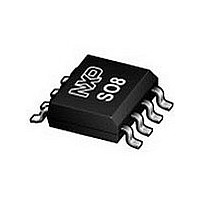PCF8563TF4 NXP Semiconductors, PCF8563TF4 Datasheet - Page 38

PCF8563TF4
Manufacturer Part Number
PCF8563TF4
Description
Manufacturer
NXP Semiconductors
Datasheet
1.PCF8563TF4.pdf
(45 pages)
Specifications of PCF8563TF4
Bus Type
Serial (2-Wire, I2C)
Operating Supply Voltage (typ)
2.5/3.3/5V
Package Type
SO
Operating Supply Voltage (max)
5.5V
Operating Supply Voltage (min)
1.8V
Operating Temperature Classification
Industrial
Operating Temperature (max)
85C
Operating Temperature (min)
-40C
Pin Count
8
Mounting
Surface Mount
Date Format
DW:DM:M:Y
Time Format
HH:MM:SS
Lead Free Status / RoHS Status
Compliant
Available stocks
Company
Part Number
Manufacturer
Quantity
Price
NXP Semiconductors
16. Handling information
17. Soldering of SMD packages
PCF8563
Product data sheet
17.1 Introduction to soldering
17.2 Wave and reflow soldering
All input and output pins are protected against ElectroStatic Discharge (ESD) under
normal handling. When handling Metal-Oxide Semiconductor (MOS) devices ensure that
all normal precautions are taken as described in JESD625-A, IEC 61340-5 or equivalent
standards.
This text provides a very brief insight into a complex technology. A more in-depth account
of soldering ICs can be found in Application Note AN10365 “Surface mount reflow
soldering description”.
Soldering is one of the most common methods through which packages are attached to
Printed Circuit Boards (PCBs), to form electrical circuits. The soldered joint provides both
the mechanical and the electrical connection. There is no single soldering method that is
ideal for all IC packages. Wave soldering is often preferred when through-hole and
Surface Mount Devices (SMDs) are mixed on one printed wiring board; however, it is not
suitable for fine pitch SMDs. Reflow soldering is ideal for the small pitches and high
densities that come with increased miniaturization.
Wave soldering is a joining technology in which the joints are made by solder coming from
a standing wave of liquid solder. The wave soldering process is suitable for the following:
Not all SMDs can be wave soldered. Packages with solder balls, and some leadless
packages which have solder lands underneath the body, cannot be wave soldered. Also,
leaded SMDs with leads having a pitch smaller than ~0.6 mm cannot be wave soldered,
due to an increased probability of bridging.
The reflow soldering process involves applying solder paste to a board, followed by
component placement and exposure to a temperature profile. Leaded packages,
packages with solder balls, and leadless packages are all reflow solderable.
Key characteristics in both wave and reflow soldering are:
•
•
•
•
•
•
•
•
Through-hole components
Leaded or leadless SMDs, which are glued to the surface of the printed circuit board
Board specifications, including the board finish, solder masks and vias
Package footprints, including solder thieves and orientation
The moisture sensitivity level of the packages
Package placement
Inspection and repair
Lead-free soldering versus SnPb soldering
All information provided in this document is subject to legal disclaimers.
Rev. 8 — 18 November 2010
Real-time clock/calendar
PCF8563
© NXP B.V. 2010. All rights reserved.
38 of 45















